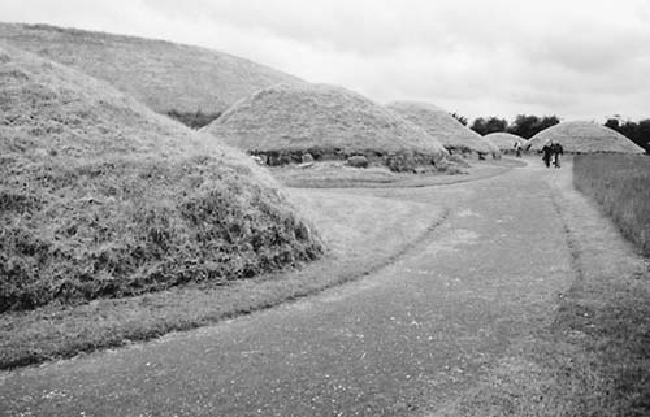Travel Reference
In-Depth Information
na Bóinne). About 250 feet across, 40 feet high, and composed of 200,000 tons of loose
stone, Newgrange was constructed so that the light from the winter solstice sunrise (Dec
21) would pass through the eastern entrance to the tomb, travel down a 60-foot passage,
and illuminate the inner burial chamber (not bad engineering for Stone Age architects).
The effect is now re-created daily, so visitors can experience this ancient ritual of renewal
and rebirth any time of year (see the Near Dublin chapter).
Some of Europe's best examples of megalithic (big rock) art are also at Newgrange.
Carved on the tomb's stones are zigzags, chevrons, parallel arcs, and concentric spirals.
Scholars think these designs symbolize a belief in the eternal cycle of life and the continu-
ation of the life force, or that they pay homage to the elements in nature on which these
ancient peoples depended for their existence.
Exploring these burial mounds (only Newgrange and Knowth are open to the public),
you begin to understand the reverence that these ancient people had for nature, and the
need they felt to bury their dead in these great mound tombs, returning their kin to the
womb of Mother Earth.
Bronze Age:
As ancient Irish cultures developed from 2000
B.C.
, so did their metal-
working skills. Gold and bronze were used to create
tools, jewelry,
and
religious objects.
(The National Museum: Archaeology and History in Dublin houses the most dazzling of
these works.) Gold neck rings worn by both men and women, cufflink-like dress fasteners,

